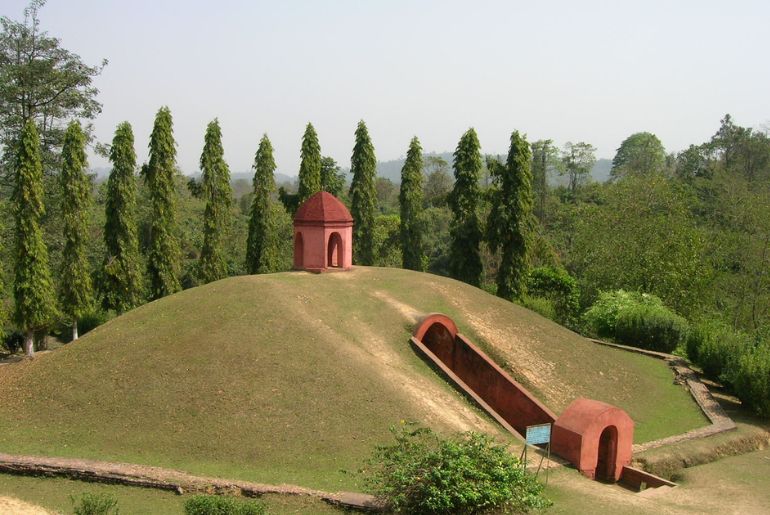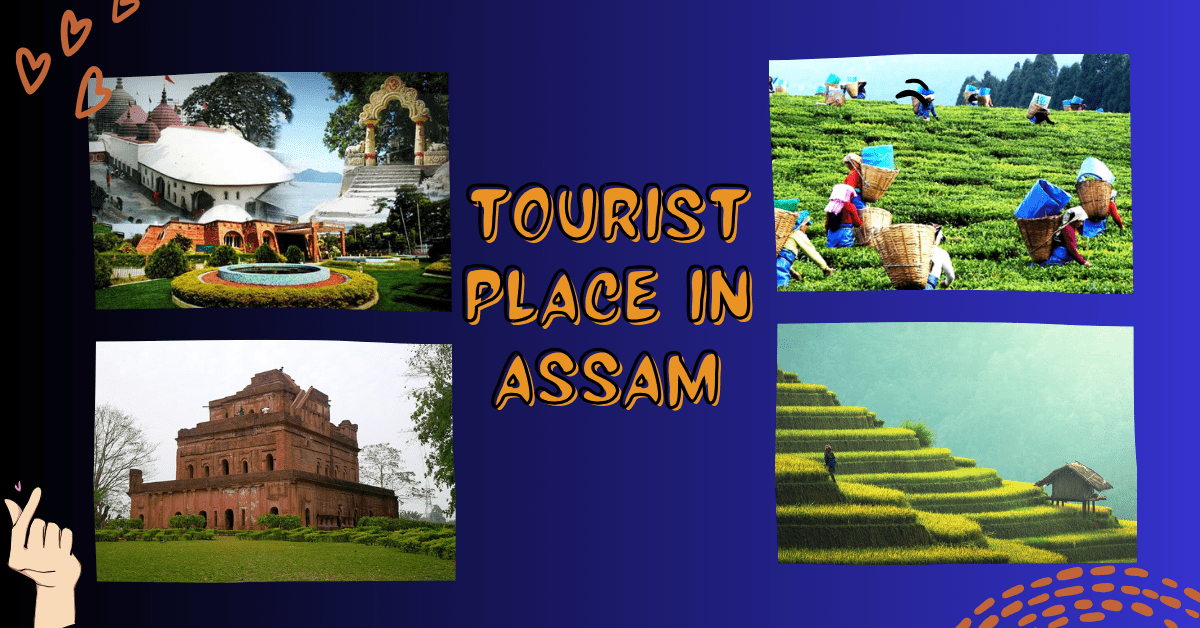Nestled in the heart of Northeast India, Assam is a tapestry of diverse landscapes, vibrant cultures, and a rich historical legacy. The Best and Famous: Top 10 Tourist Places in Assam serve as gateways to this enchanting land, contributing significantly to the societal fabric. In this blog post, we will delve into the impact of these iconic destinations, exploring their relevance, evolution, and potential future developments, and how they shape the social narrative of Assam.

1. Kaziranga National Park – Biodiversity Conservation and Ecotourism:
Kaziranga National Park, a UNESCO World Heritage Site, is a beacon of biodiversity conservation and ecotourism in Assam. The park’s relevance lies in its role as a sanctuary for the endangered one-horned rhinoceros and numerous other species. Over the years, the evolution of Kaziranga has seen a surge in ecotourism, providing economic sustenance to local communities. The future may witness continued efforts in biodiversity preservation and responsible tourism practices.
2. Majuli – Cultural Heritage and Sustainable Tourism:
Majuli, the world’s largest river island, is not just a geographical marvel but a cultural gem. Its relevance extends beyond its scenic landscapes to its role in preserving Assam’s unique cultural heritage. The evolution of Majuli involves a delicate balance between cultural preservation and sustainable tourism. Future developments might include initiatives to safeguard the island’s traditions, promote responsible tourism, and support local artisans.
3. Kamakhya Temple – Spiritual Hub and Cultural Identity:
Kamakhya Temple, perched atop Nilachal Hill, stands as a spiritual hub and cultural identity marker for Assam. The relevance of Kamakhya lies in its status as one of the holiest shrines in Hinduism. The temple’s evolution has witnessed an increasing influx of pilgrims and tourists. Future developments may involve infrastructure enhancements to accommodate the growing number of visitors while preserving the sanctity of this sacred site.
4. Assam State Zoo cum Botanical Garden – Conservation Education:
The Assam State Zoo cum Botanical Garden is not merely a zoo; it serves as a center for conservation education. Its relevance lies in its dual role of wildlife preservation and public awareness. The evolution of the zoo involves a shift towards more ethical practices, emphasizing education over mere exhibition. Future developments may focus on expanding educational programs and promoting wildlife research.
5. Sualkuchi – Weaving Tradition and Economic Empowerment:
Known as the “Manchester of the East,” Sualkuchi is a weaving hub where traditional Assamese silk is crafted into exquisite garments. The relevance of Sualkuchi lies in its preservation of indigenous weaving traditions and the economic empowerment it provides to local weavers. The evolution of Sualkuchi may witness a continued emphasis on sustainable practices, supporting artisanal communities, and promoting Assamese silk globally.
6. Manas National Park – Conservation and Community Engagement:
Manas National Park, another UNESCO World Heritage Site, is a haven for wildlife conservation and community engagement. The park’s relevance extends to its role in preserving the Bengal tiger, Indian rhinoceros, and several other endangered species. The evolution of Manas involves community-based conservation initiatives, fostering a sense of ownership among local communities. Future developments may emphasize further community engagement, sustainable tourism, and habitat restoration.
7. Guwahati – Gateway to Northeast India:
Guwahati, the bustling gateway to Northeast India, holds a strategic and cultural significance. Its relevance lies in being the commercial and cultural capital of Assam. The evolution of Guwahati has seen infrastructural developments, making it a major hub for trade, education, and tourism. Future developments may involve sustainable urban planning, preserving cultural heritage, and promoting Guwahati as a vital link to the Northeast.
8. Hajo – Interfaith Harmony and Religious Diversity:
Hajo, a town of historical and religious importance, showcases Assam’s interfaith harmony. Its relevance lies in being home to temples, mosques, and churches, symbolizing religious diversity. The evolution of Hajo involves a peaceful coexistence of various religious communities. Future developments may focus on preserving religious heritage, fostering dialogue, and promoting Hajo as a symbol of Assam’s secular ethos.
9. Dibrugarh – Economic Hub and Tea Heritage:
Dibrugarh, known as the “Tea City of India,” serves as an economic hub with a rich tea heritage. Its relevance is deeply rooted in the tea industry that has shaped Assam’s economy. The evolution of Dibrugarh involves modernization of the tea industry and infrastructural development. Future developments may include sustainable practices in tea cultivation, promoting agro-tourism, and preserving the architectural legacy of colonial tea estates.
10. Tezpur – Historical Legacy and Cultural Tourism:
Tezpur, with its historical legacy dating back to ancient times, is a treasure trove of cultural tourism. Its relevance lies in the archaeological remnants and mythological stories associated with the town. The evolution of Tezpur involves efforts to showcase its historical significance. Future developments may include heritage conservation projects, archaeological studies, and initiatives to promote Tezpur as a cultural tourism destination.
Conclusion:
In conclusion, the Best and Famous: Top 10 Tourist Places in Assam play a multifaceted role in shaping the societal narrative of this vibrant state. From biodiversity conservation and cultural preservation to economic empowerment and spiritual significance, each destination contributes to the rich tapestry of Assam. As Assam continues to evolve, striking a balance between tourism development and the preservation of its unique identity becomes paramount. Future developments should focus on sustainable practices, community engagement, and the promotion of Assam’s diverse heritage, ensuring that these iconic places remain integral to the social fabric of the region.

Best and Famous 37 Tourist Places List in India
| Zone | States | |||
| North | Jammu & Kashmir | Haryana | Delhi
Rajasthan |
Punjab |
| Central | Uttar Pradesh | Madhya Pradesh | Chhattisgarh | Uttarakhand |
| East | Bihar
Sikkim |
Odisha | Jharkhand | West Bengal |
| West | Gujarat
Goa |
Daman Diu | Maharashtra | Dadra Nagar Haveli |
| South | Karnataka
Tamil Nadu |
Kerala
Puducherry |
Andhra Pradesh
Andaman Nicobar |
Telangana
Lakshadweep |
| Northeast | Manipur
Meghalaya |
Mizoram
Assam |
Tripura
Arunachal Pradesh |
Nagaland |
| Southeastern | Ladakh | |||
